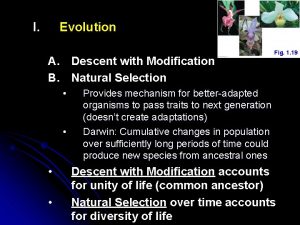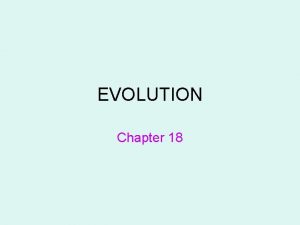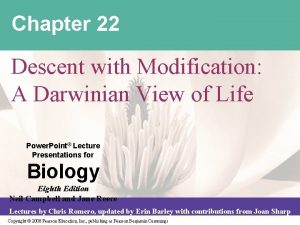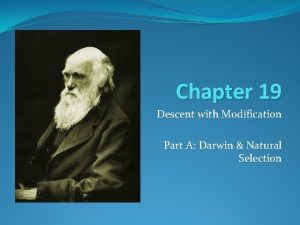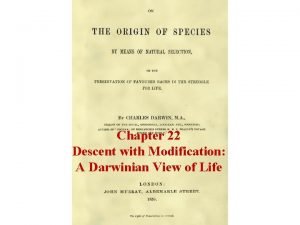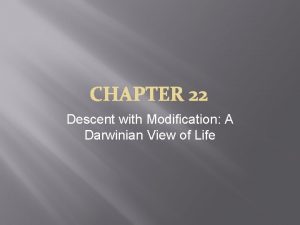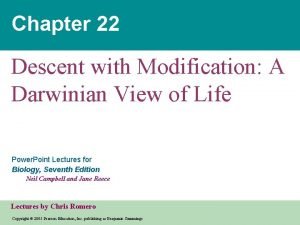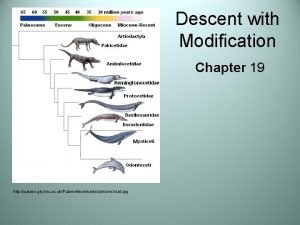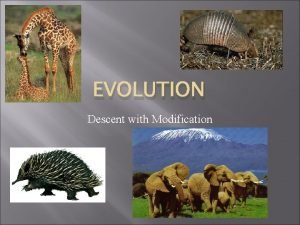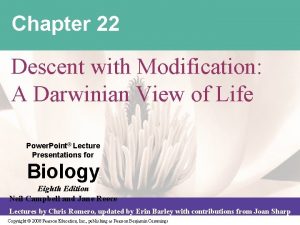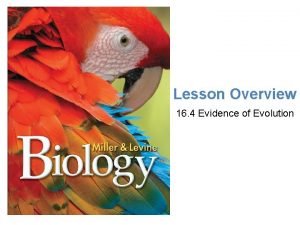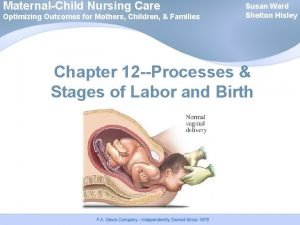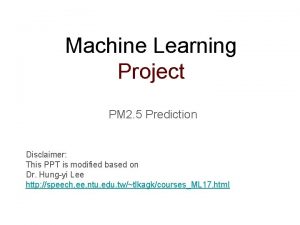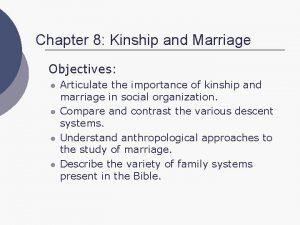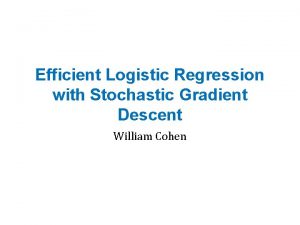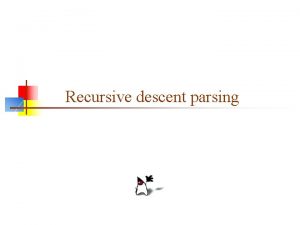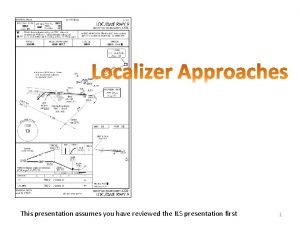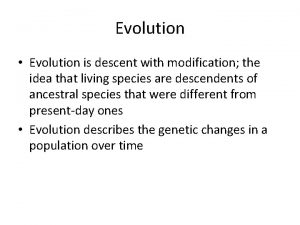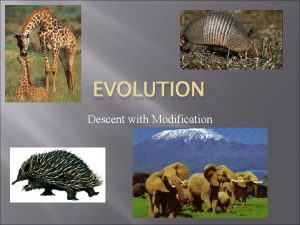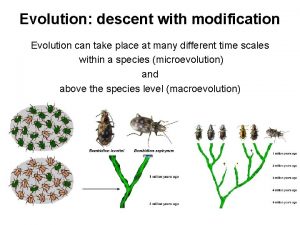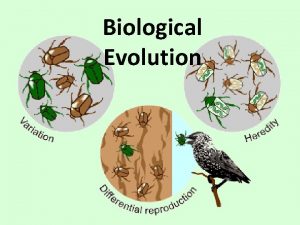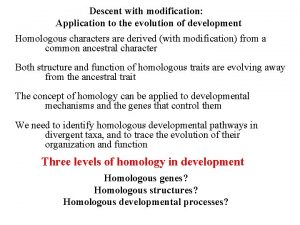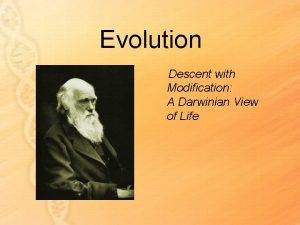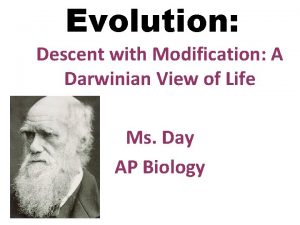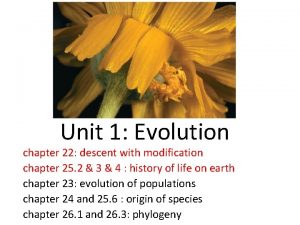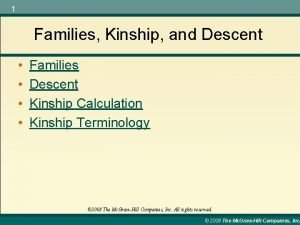Evolution is the phenomenon of modification with descent




















- Slides: 20

Evolution is the phenomenon of modification with descent (it is not natural selection)

Big questions in evolution • Why do species change? Hyracotherium (50 MY) • How do new species arise? Hawaiian Drosophila • Why do species go extinct? Equus

A (very brief) history of evolutionary thought • Aristotle and Plato – Archetypes (i. e. no evolution, variation is meaningless) • Buffon, Cuvier, Smith – Importance of fossils. Earth may be old. • Hutton, Lyell – Current geological processes can explain earth, but only on a long time-scale • Lamarck and Erasmus Darwin – Transmutationism – Inheritance of acquired characeteristics or ‘use and disuse’ – Universal common ancestor

Darwin and the Beagle: 1831 -36 <<insert picture p 432 Campbell>>

What Darwin said Organisms produce too many offspring Heritable differences exist in traits influencing the adaptation of an organism to its environment Organisms that are better adapted have a higher chance of survival Also Alfred Russell Wallace – letters to Darwin prompted publication of ‘On the Origin of Species’

Darwin’s finches Geospiza

The Huxley – Wilberforce debate I asserted - and I repeat - that a man has no reason to be ashamed of having an ape for his grandfather. If there were an ancestor whom I should feel shame in recalling it would rather be a man-a man of restless and versatile intellect-who, not content with an equivocal success in his own sphere of activity, plunges into scientific questions with which he has no real acquaintance, only to obscure them by an aimless rhetoric, and distract the attention of his hearers from the real point at issue by eloquent digressions and skilled appeals to religious prejudice.

Arguments against Darwin • Biblical – Earth is only about 4000 years old • Tautological – Which are the fitter organisms? Those which survive. • Paley’s blind watchmaker – How can complex structures arise by a ‘blind’ process? • The problem of heredity – How can natural selection work?

Gradualist steps in the origin of the molluscan eye

Darwin and heredity • Darwin viewed heredity as a blending process • BUT blending inheritance removes variation which is essential for natural selection • Francis Galton’s law of heredity attempted to provide a mathematical basis for Darwin’s views (later reinterpreted by Karl Pearson) • Major controversy in the early 1900 s arose between those who supported Darwin’s view and those (led by Galton) who rejected them

What is the evidence for evolution? • The fossil record – Origin of diversity – Continuity of form – Simultaneous shifts in climate and fossil fauna • Direct observation – Industrial melanism – Drug resistance – Experimental • Species complexes – Hybrid zones – Ring species • Homology – Similarity through common descent – From anatomy to molecular biology

The fossil record – different forms of life Ediacara Burgess Shale Dickensonia ~ 550 MY Marella ~ 500 MY Burgess shale

Fossils – continuity of form Homo erectus 1. 8 MY Homo sapiens (early form) 0. 18 MY Homo sapiens (modern) 0. 01 MY

How are fossils formed? • unaltered preservation – like insects or plant parts trapped in amber, a hardened form of tree sap • permineralization=petrification – in which rock-like minerals seep in slowly and replace the original organic tissues with silica, calcite or pyrite, forming a rock-like fossil - can preserve hard and soft parts - most bone and wood fossils are permineralized • replacement – An organism's hard parts dissolve and are replaced by other minerals, like calcite, silica, pyrite, or iron • carbonization=coalification – in which only the carbon remains in the specimen - other elements, like hydrogen, oxygen, and nitrogen are removed • recrystalization – hard parts either revert to more stable minerals or small crystals turn into larger crystals • authigenic preservation – molds and casts of organisms that have been destroyed or dissolved

Evolution in action I – Industrial melanism Frequency of melanic form in England (1959 -1995) Melanic and wild-type Biston betularia

Evolution in action II – Drug resistance in HIV • RT inhibitors – Block reverse transcription • Nucleotide RT inhibitors – Chain terminating nucleotide analogs – Some escape mutations avoid incorporating altered bases – Others can excise them if incorporated • In absence of drug modifications are deleterious – Compensatory mutations can occur which reduce/remove deleterious effect

Ring species • Continuously interbreeding forms between two or more separate species – e. g. Ensatina salamanders in California

Homology – inference of shared ancestry • Structures similar by descent – wings of birds and bats homologous to arms of humans and flippers of dolphins – subunit alpha- and beta-globin in haemoglobin similar through descent Structural similarity between Acetylcholinesterase and Calmodulin (Tsigelny et al, Prot Sci, 2000, 9: 180)

Is species change inevitable? Coelocanth Dicksonia tree fern Tuatara

Further controversies in the evolution debate • Gradualist v punctuated? – Fossil record shows abrupt changes of form separated by long periods of stasis – ‘Punctuated Equilibrium’ – Gould and Eldridge – BUT fast in fossil record is millions of years – Fossil record very patchy – Gradualist evolution can occur fast (e. g. Homo sapiens)
 Darwin
Darwin Descent with modification definition
Descent with modification definition Descent with modification definition
Descent with modification definition Post-anal tail
Post-anal tail Chapter 19 descent with modification
Chapter 19 descent with modification Chapter 22 descent with modification
Chapter 22 descent with modification Ch 22 descent with modification
Ch 22 descent with modification Descent with modification
Descent with modification Descent with modification: a darwinian view of life
Descent with modification: a darwinian view of life Descent with modification
Descent with modification Describe descent with modification
Describe descent with modification Chapter 22: descent with modification
Chapter 22: descent with modification Partograph
Partograph Texas descent and distribution before 1993
Texas descent and distribution before 1993 Embryology evidence
Embryology evidence Fetal descent stations
Fetal descent stations Linear regression gradient descent
Linear regression gradient descent Patrilineal descent
Patrilineal descent Logistic regression stochastic gradient descent
Logistic regression stochastic gradient descent Recursive descent parser
Recursive descent parser Visual descent point
Visual descent point

